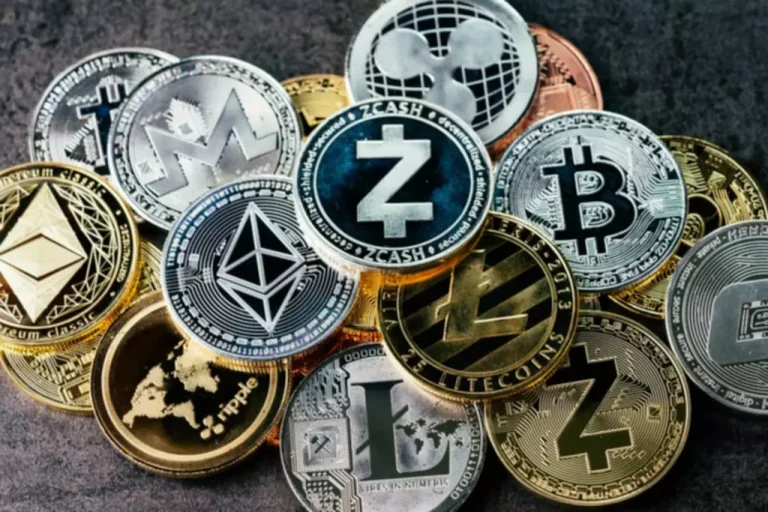

Content
Project founders create a token smart contract and pair it with a base currency pool (like ETH or BNB). The protocol uses an AMM (automatic market maker) algorithm to enable swapping https://www.xcritical.com/ between the assets at dynamic rates. The exchange reviews the IEO applicants based on product stage, team strengths, tokenomics and other factors. They charge an upfront listing fee to list only quality coins vetted for long term viability. ILO is considered to be a cost-effective method compared to other techniques.
IEOs, by contrast, are hosted on centralized exchanges, which typically enforce strict compliance protocols. These exchanges conduct due diligence on the projects they support, offering a layer of legal and procedural oversight that reduces the likelihood of regulatory violations. However, this oversight comes at the cost of flexibility and increased project List of cryptocurrencies expenses.
An IDO is an Initial DEX Offering, whereas a “DEX” is a Decentralized Exchange. A decentralized exchange is like a regular exchange, but no one is in charge. So, instead of the exchange buying coins from sellers and selling coins to buyers, the buyers and sellers just do ido crypto meaning business with one another. ICO is a centralized fundraising model, ITO is similar but may comply with regulations, while IDO is a decentralized offering conducted on a decentralized exchange (DEX). Similar to an ICO, an Initial Token Offering (ITO) is a fundraising mechanism used by projects to raise capital.
Hosted by centralized exchanges (CEXs), these offerings were created to avoid the scam and Ponzi schemes that had infiltrated the ICO space. An IEO (Initial Exchange Offering) was similar to an ICO in that it was launched on a centralized exchange and promised that the token would indeed be listed on an exchange and that investors would not be duped. Furthermore, in IEOs, crypto projects were carefully scrutinized, and the roadblock for projects participating in an IEO was relatively high. As a result, there is a sense of trust between investors and the larger crypto community.

By mid-2017, ICOs exploded as a popular tool for crypto fundraising with over $10 billion raised by over 800 token projects the following year. The simplicity and lack of red tape enabled even blockchain startups with just a website and whitepaper to secure millions in capital. To conduct an ICO, the crypto team simply needs to publish a project whitepaper detailing the vision, release a smart contract and kick off a token generation event. During the ICO period (typically 30 days), public investors can purchase the new tokens in expectation of price gains when they get listed on exchanges.
Binance Launchpad, a trailblazing platform in the crypto launchpad sphere, continues to capture attention as a leading force in 2025. Renowned for its transformative role, Binance Launchpad empowers promising blockchain projects by offering them a platform to raise capital and garner widespread community support. The first IDO took place in June 2019, when the Raven protocol held a token sale through Binance DEX, raising over $500,000 and selling 3% of the total coins. In April 2020, the IDO of the decentralized financial contract platform UMA Protocol took place.
Thus, making them a better avenue to launch tokens and raise funds without the complications of centralized exchanges. IDO, or Initial DEX Offering, is a crypto coin (or token) offering that happens on a decentralized exchange (DEX). Unlike an ICO, however, where tokens are sold before an exchange listing, in an IDO, tokens are immediately listed on the DEX through which they’re launched.
An IDO, or initial DEX offering, is the first step towards a new era of decentralized crypto crowdfunding. Ultimately, the success of your fundraising isn’t dictated solely by the model you choose but by how well it serves your goals, builds trust, and strengthens your relationships with investors. There are a few ways people raise money in the crypto world, but today we’ll focus on these two.
Ethereum is now the second-largest cryptocurrency in the world by market capitalization and is arguably one of the most successful cryptocurrency projects ever launched. Its native coin, ETH, was offered in 2014 via an ICO where individuals could buy the coin using BTC. The success of an initial DEX or coin offering depends on various criteria, including utility, marketing, and community support. Here are eight examples of projects that are classified as successful coin offerings. Investors are guaranteed a set price for new coins or tokens that are accessible to anyone. However, because ICOs can be created easily, malicious parties can take advantage.

During the ICO drives, anyone can buy the project tokens; thus, buying and selling happen anonymously, attracting many investors. This gives the public in-depth details about the project and encourages them to invest in the new venture. Any of these activities, if positioned correctly, can help you achieve your business goals.
ICOs, IEOs, and IDOs each offer distinct paths to raise capital, but the model is only part of the equation. Success depends on how well your team delivers—building trust, engaging with your community, and staying agile in a fast-changing space. Your choice reflects not just your strategy for fundraising but the foundation of how your project will operate and grow. Immediate liquidity provided by DEXs is one of the main reasons IDOs work. Many projects in IDOs also use the proof-of-stake (PoS) consensus mechanism to discourage crypto investors from selling too soon.
Of course, from the point of view of reliability, IEO comes first, but it is also the most resource-intensive type of fundraising of all those listed. Another difference from an ICO is that during the IDO, investors receive only promissory notes to purchase tokens and not the project’s cryptocurrency. This means that they can obtain the tokens or cryptos after the completion of the IDO. However, given the growing number of scam platforms that close down immediately after their launch (so their investors lose their money), trust in ICOs has dropped significantly since 2013. Now, instead of being limited to projects on a single blockchain platform (e.g., Ethereum), investors can view projects available on Binance Smart chain, Ethereum, Polkadot, Solana, Avalanche, and others.
Project owners can raise a lot of money for project development through these 3 types of capital calls. With the help of the IDO fundraising approach, startups do not require a centralized exchange. For example, a gaming platform might offer tokens that can be used to purchase in-game items or unlock special features.
ICOs are a straightforward, fast way to raise money, but they come with more rules and security risks. IDOs are more open and fair, with instant trading, but you need to watch out for gas fees and do your research. Knowing these differences will help you make better choices in the crypto world. Crypto exchanges have a verification process, so crypto projects that make it onto exchanges are usually more reliable.
Copyright © 2023 AFFITTO. Todos los derechos reservados.

Permanencia: Por un periodo de 36 meses
Cuando aportas tu propiedad a Affitto te comprometes a que tu inmueble esté gestionado por nosotros por un periodo de 36 meses, podrás retirarte cumpliendo los periodos de notificación anticipada y cumpliendo con la penalización por terminación anticipada del contrato

Tareas que realiza Affitto
Nos encargamos de toda la gestión comercial y operativa de tu propiedad por medio de un equipo profesional que se apoya en tecnología avanzada: a.) Definición de la estrategia óptima de comercialización, incluyendo la definición del mejor canon de arrendamiento a cobrar, así como registros fotográficos, publicación en canales digital y físicos, muestra el inmueble a potenciales arrendatarios b.) Gestión operativa de tu propiedad, lo que incluye: 1.Relacionamiento con el propietario 2.Coordinación de mantenimientos y reparaciones 3.Cobro del canon de arrendamiento

Comisión de Affitto
Por la realización de nuestras labores (incluyendo comercialización y garantía del canon de arrendamiento mientras se encuentre vacante) cobramos una comisión del 20% sobre los ingresos brutos mensuales cuando el inmueble se encuentre arrendado.